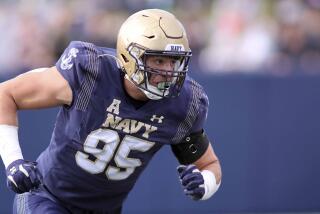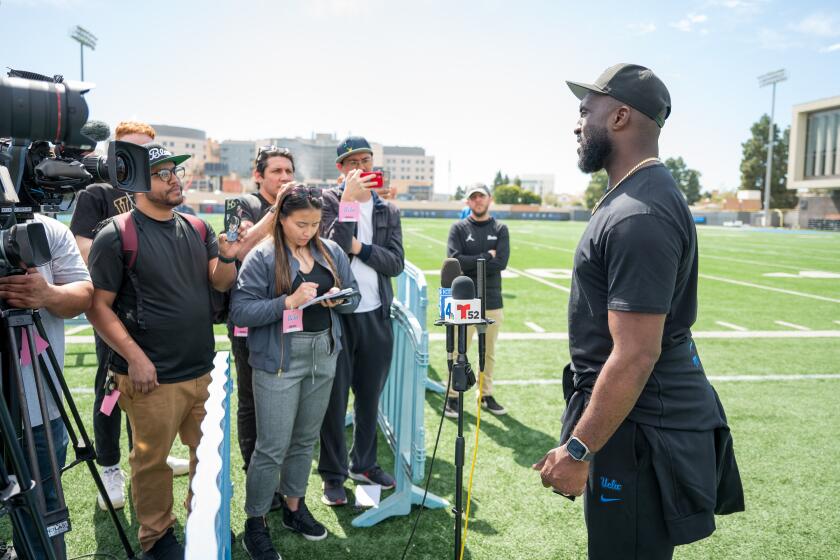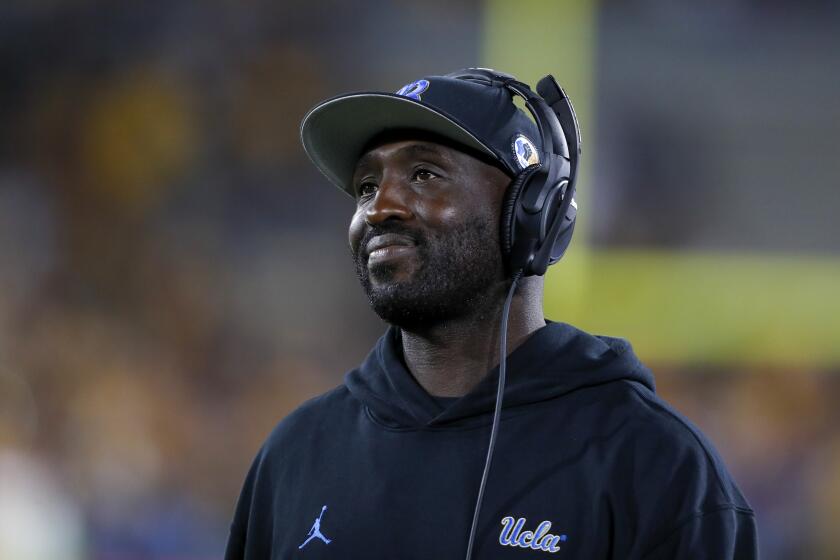Members of UCLA football team using helmets with sensors
More than 20 UCLA football players have begun wearing helmets equipped with sensors that “measure hits to the head,” the school announced Friday.
The sensors are part of an ongoing effort by UCLA researchers and the athletic department to better understand the effects of head injuries and concussions. Accelerometers in the helmets detect hits with over 90 degrees of force, which alerts trainers on the sidelines to examine the health of the affected player at the next available opportunity. UCLA joins a handful of other schools, including Virginia Tech and the University of North Carolina, in utilizing the technology.
“It measures the multitude of forces, it inputs all the data, and comes up with a picture of where the actual impact occurs,” said Max Zeiger, clinic and research coordinator at UCLA.
The funding for the sensors — which costs roughly $100,000 — was provided by New York Giants co-owner Steve Tisch. In May 2014, Tisch donated $10 million to the school’s concussion clinic, which has since been renamed the Steve Tisch BrainSPORT Program. On Wednesday, Tisch visited UCLA to examine the program’s progress.
“In some ways, this is a real pilot project, and I think a lot of people are going to be watching the work coming out of UCLA,” Tisch said.
UCLA is participating in a national study by NCAA and the Department of Defense aimed at gathering biological, neurological, and cognitive data from student-athletes. The football team, along with the men’s and women’s soccer teams, began baseline biological testing in the spring. That testing will be expanded this fall. Dr. Christopher Giza, director of the program, would like to use the research from the NCAA-DoD study to increase brain injury awareness and education for all age groups.
“One of our stated mandates — and I’m a pediatric neurologist, we focus on whatever we learn at the higher levels, the professional and collegiate levels — is that we can get that down to the high school and even the middle school levels, and hopefully even younger,” Giza said.
More to Read
Go beyond the scoreboard
Get the latest on L.A.'s teams in the daily Sports Report newsletter.
You may occasionally receive promotional content from the Los Angeles Times.






